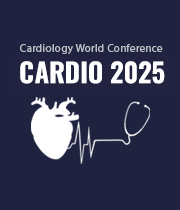Title : Poor reporting of right ventricle contouring technique and body surface area method in cardiac magnetic resonance studies of patients with repaired tetralogy of fallot
Abstract:
Aim: Timing of pulmonary valve intervention (PVI) for pulmonary regurgitation is guided by right ventricle (RV) volumetric/function assessment on cardiac magnetic resonance (CMR) in patients with repaired Tetralogy of Fallot (ToF). RV volumes are conventionally indexed to actual body surface area (BSA), however, several different RV contouring techniques and BSA methods/formulas exist with significant variability in reported measurements. We aimed to review the protocols reported in CMR studies of PVI in ToF.
Method: A search of electronic databases (Embase and MEDLINE) was performed to identify studies published between 28/2/10-28/2/25 which assessed adults with repaired ToF before and after PVI using CMR. RV contouring technique and BSA method was reviewed.
Results: After screening 610 references, a total of 21 studies met criteria and were included. Studies were of only level III or level IV (lowest) level of evidence (100%, 21/21). Most studies (76%, 16/21) did not specify the RV contouring technique used. Of the 5 studies describing the RV contouring technique, 4 excluded trabeculations/papillary muscles from the RV volume and 1 included these structures. No studies reported the method/formula used to calculate actual BSA.
Conclusion: The RV contouring technique and BSA method/formula utilised in CMR studies of PVI in ToF is poorly reported. Given the importance of severity thresholds for RV volumes/function in triggering intervention in clinical practice, clear reporting and standardisation of RV contouring technique and BSA method should be mandatory. Further research into the optimal RV thresholds for PVI based on contouring technique is required.



